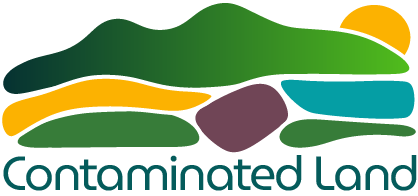In situ flushing is a remediation technique aimed at altering the mobility of contaminants in the subsurface, facilitating their dissolution into groundwater for extraction and treatment above ground. The process involves injecting aqueous dissolved reagents, which may include acids, surfactants, solvents, or complexing agents, into the contaminated aquifer. These reagents help mobilise contaminants, making them easier to recover through a series of pumping, extraction, and reinjection circuits. The reagents interact with contaminants, increasing their solubility and facilitating their transport to the surface for further treatment. This approach is often used to manage the contamination of groundwater and the easily treatable surfaces of aquifers.
One of the key aspects of in situ flushing is the controlled management of contact time between the injected water and the contaminated matrix. This is essential for ensuring that contaminants are sufficiently mobilised before the water is extracted. However, achieving equilibrium in the dissolution process can be difficult, and the practice often faces challenges such as contaminant rebound once the system is switched off. Moreover, the effectiveness of the treatment depends on the availability and accessibility of the contaminants, and the system design needs to be highly tailored to the site’s geological and hydrogeological conditions. The approach is also vulnerable to issues like the emission of treatment agents outside the designated area and potential contamination of surrounding groundwater.
The technique is suited for treating a wide range of contaminants, including volatile organic compounds (VOCs), polycyclic aromatic hydrocarbons (PAHs), pesticides, and per- and polyfluoroalkyl substances (PFAS). It can be beneficial when combined with long-term hydraulic containment or other methods like in situ bioremediation and in situ chemical oxidation/reduction. However, the use of reagents such as surfactants and solvents can alter the geotechnical properties of the soil, and improper application may lead to enhanced migration of contaminants. Site-specific understanding is critical to avoid unintended consequences such as contaminant spread or degradation of aquifer conditions.
While in situ flushing offers benefits like avoiding excavation and reducing site disturbance, it also has significant drawbacks. The process can be slow, and the transfer of soil contaminants into solution is not always efficient. It also requires careful management to prevent the accidental release of mobilised contaminants into wider groundwater pathways. The implementation of this technique may raise regulatory concerns, particularly regarding the impact of injected reagents on aquifer quality and the risk of increasing contamination in areas beyond the treatment zone. Additionally, the recovery and recycling of mobilisation agents can incur extra costs, and the long-term environmental impact remains a concern, particularly if proper containment and disposal measures are not followed.


